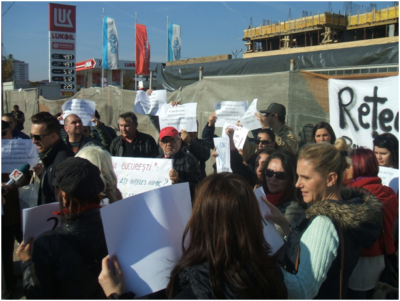Why Organize?
Our theory of change is rooted in community organizing as a strategic intervention to build and shift power from the bottom up for systemic change to achieve our vision and transformative goals. We believe that community organizing is able to build collective power of the most affected communities by building their leadership, organizing capacity, and ability to take collective action to respond and transform intersecting systems of oppression and bring about justice.
We see organizing as a diverse and evolving practice that we want to contribute to develop. We value the diversity of organizing practices among ECON members and partners. We develop our organizing practice through the praxis of doing, reflecting, learning, and applying the lessons learned. To identify the core of organizing that connects the different traditions, we like to say that organizers work at three levels. At the micro level, organizers work to create an organizational space where affected people can enhance personal and collective ability to act. At the meso level, organizers connect already organized units and integrate them into a larger organizational unit or network. At the macro level, organizers look into political and social structures so that they can give meaning to evolving political opportunities at the time of an opening.
Organizing contributes to systemic change by enabling impacted communities, organizations and groups to build the collective power and leadership to drive change, from developing collective analyses of the issues, to planning collective solutions and actions for change. Organizing builds the power to hold government and private sector accountable to involve communities in decision making, to ensure equal access to rights, services and opportunities to all; to demand legislation and actions that redistribute power and resources in more just and equitable ways; to monitor the good functioning of democracies, elections, to defend democratic rights, and civic spaces for participation; to strengthen community resilience, mutual support, and solidarity in times of crises; and and to co-creating community-based solutions and alternatives to societal issues.
We believe that systemic change happens through multiple and diverse interventions that are driven by different actors in an ecology of social movements. Organizing is a strategic intervention for systemic change that shifts power to the most affected communities and we are interested in exploring how it can be combined and integrated with other interventions as part of wider social movements strategies. Collaboration and alliances among different actors in the movement ecosystem is crucial to build the power and scale needed for systemic change.
Our History
Our past, present and future
The European Community Organizing Network (ECON) formed at a meeting in January, 2008 in Český Těšín, Czech Republic. Its founding followed two international community organizing trainings held at the Le Pont Meeting Center of Protestant Churches in Paris, France. The founding of ECON 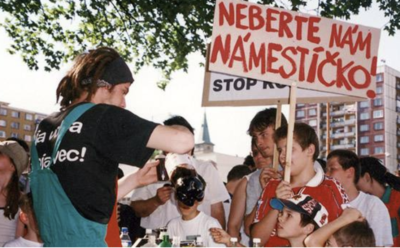 represented the growing interest in community organizing in Europe and the growing network of relationships between people and organizations in Europe seeking practical and effective social change strategies.
represented the growing interest in community organizing in Europe and the growing network of relationships between people and organizations in Europe seeking practical and effective social change strategies.
In its early days, ECON focussed on promoting community organizing. We conducted numerous local trainings and consulting visits in over a dozen European countries. We organized site visits allowing community organizing staff and volunteers to share experiences and best practices. Starting in 2009, ECON worked in partnership with the Great Lakes Consortium in the United States to allow an exchange between organizers in America and Europe. In that time ECON also led or participated in the publication of a number of studies on the organizing sector in Europe.
“Our ambition has grown”
In October of 2016, ECON registered as a formal organization. At a subsequent ECON membership assembly one of our leaders put it best: “when ECON was born we focussed on promoting the idea of organizing. Now our goal is to support organizing on the ground.”
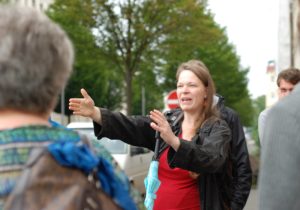 Indeed, community organizing is increasingly wide-spread practice in Europe. Numerous organizations across the continent have built sophisticated community organizing programs, and every day more organizations have begun looking at how to implement the practice of community organizing into their work. These organizations need the support to grow the scale and impact of their efforts. This is the niche that ECON fills.
Indeed, community organizing is increasingly wide-spread practice in Europe. Numerous organizations across the continent have built sophisticated community organizing programs, and every day more organizations have begun looking at how to implement the practice of community organizing into their work. These organizations need the support to grow the scale and impact of their efforts. This is the niche that ECON fills.
In 2019, ECON elected new board members, and at a subsequent board retreat we affirmed our focus on three core areas of support that ECON will provide to the community organizing movement: 1) connecting organizers to the training and mentorship they need to learn their craft, 2) driving alignment between organizing initiatives in different countries and regions, and 3) helping to raise money by seeking to “grow the pie” of resources available to the community organizing sector.
Looking forward
The interest–and the need–for community organizing continues to grow in Europe. We imagine a future where there is a robust ecosystem of community organizing projects in Europe. These will be lead by anchor organizations in numerous countries and sprouting grassroots leaders and initiatives in communities big and small. We envision a future where organizers have the training and living wages they need to grow and thrive in their craft. And we are laying the ground work for a network of organizations with the capacity to link local issues to the big picture challenges of the day.
Organizing Stories
Developing a care and wellbeing strategy in crisis
Slovakia,Centre of Community Organizing (CKO)
Background
In 2020-2022, Slovakia, like many other countries, faced the Covid-19 pandemic which significantly impacted the psychological wellbeing of community organizers, local leaders, staff and volunteers due to extended periods of isolation and uncertainty. The impossibility of meeting in person, advancing campaign activities, and the necessity to move activities online impacted several community organizing efforts. These conditions weakened relationships within and between groups and communities, and created feelings of anxiety, separation, loneliness, and fragmentation. In this context the Center for Community Organising (CKO) experienced a case of burnout among their staff.
Organizing process
Starting from a case of burnout, the Center for Community Organising (CKO) initiated a process of prioritizing care and wellbeing of their staff, volunteers and communities as crucial to their organizing work, and developed a care culture, structures, and practices. The key steps in the process where the following: → Addressing cases of burnout
- Preventing burnout relapse
- Prioritizing care and wellbeing in the whole organization
- Developing a vision and long-term goal to promote care and wellbeing in a team retreat facilitated by a professional therapist.
- Developing and internal well-being strategy
- Monitoring and evaluation of wellbeing in the organization
- Advocating for care and wellbeing with other organizations and donors
Outcomes
- The staff who experienced burnout came back to work more relaxed and motivated.
- The team in the organization was engaged in providing care and emotional support to the colleague who experienced burnout.
- CKO developed a vision, long-term goal, and strategy on how to embed care and wellbeing in the organization.
- Funders of CKO decided to fund care and wellbeing activities after CKO engaged them on the importance of supporting wellbeing.
- Other NGOs are inspired by CKO advocacy and education on care and well-being and have also developed metrics to implement some of the practices in their organizations.
Lessons learned
- Effective community organizing stands and falls on people. Therefore, people’s wellbeing and mental health must be prioritized.
- We must cultivate culture, structure and practices of care, and well-being individually and as groups.
- Success should be measured by people’s wellbeing, satisfaction, and dignity, not only by campaign wins.
Source
ECON (2023). Organizing in Crisis: A curriculum for community organizers. CC-BY NC-SA 4.0.
Organizing against air pollution during elections in Serbia
Serbia, Serbia on the move
Background
In Serbia there is an ongoing crisis of air pollution. A large portion of power generation and heating comes from plants that run on coal. Serbia has significant deposits of coal, but most of it is low grade lignite. It is cheaper than coal, but when burned, it releases large amounts of pollutants into the air with severe effects on the health of the population, including on cardiovascular, respiratory and cerebrovascular diseases. Between 2020 and 2021, the organization Serbia on the Move led a campaign titled “Sign, Breathe” to raise awareness of air pollution in Serbia and gather 30 000 signatures to propose a law to ban the sale of raw, low-quality lignite in Serbia. The campaign was done in partnership with Taraba, an organization using digital technologies to support community initiatives.
Organizing process
The campaign started with zero budget and a team of 10 local leaders trained as organizers at the Leadership, Organizing and Action course at the Harvard School of Government who provided support and training to volunteers during the campaign. They researched measures that would affect the degree of air pollution and formulate demands. They published an online petition to identify interest and gather support for the demand to propose a law to ban the sale of low quality lignite in Serbia. They organized local leaders and national networks forming a leadership structure using the organizing snowflake model when new volunteers were engaged in the campaign. They used one to-one conversations to expand the structure, grow the number of campaign teams, and develop leadership. This allowed them tm submit letters to government institutions and to write the text of the people’s initiative in consultation with the community and organizing communities to build support for the people’s initiative. They also used social networks as a channel to give visibility to the campaign and communicate with like minded citizens and potential volunteers, putting out an open call for volunteers and organizations to join the campaign. They organized trainings in community organizing for volunteers and partner organizations. Finally, after much work they presented the text and signatures of the people’s initiative to the National Assembly advocating to put the text of the initiative on the agenda of the National Assembly.
Outcomes:
- Gathered over 26 000 signatures for an online petition, mostly by using social networks.
- 200 volunteers and 10 organizations responded to the call join the campaign
- 100 volunteers were trained in community organizing
- Most of the organizations involved in the campaign decided to use the community organizing methodology in their organizations to a different degree.
- Leading Media outlets covered the issue and the campaign
- The Ministry of Energy called the campaign representatives to schedule a meeting with one of the State secretaries for energetics and develop a plan on how to collaboratively tackle the issue in the future.
Lessons learned
- Despite succeeding in organizing volunteers and gathering signatures in support of the people’s initiative, the campaign needed to devote more attention to figuring out how to relate meaningfully to the local elections that were happening at the same time and the debates that citizens and candidates were having. The issue of air pollution was framed in a non-partisan way, to avoid being “too political” and it ended up being ignored in political debates, sidelined by media and among people. This prevented the campaign from staying relevant during elections and from building enough power to get the National Assembly to prioritize the issue in their agenda.
- Organizers should relate elections as “planned crises” that change conditions in the socio-political context and affect communities and citizens with whom we organize. Therefore, organizers need to plan and respond to electionsin our contexts by “make meaning” and framing the issue in a way that is relevant to voters and candidates during elections, and in ways that build power to win our demands.
Source
ECON (2023). Organizing in Crisis: A curriculum for community organizers. CC-BY NC-SA 4.0.
Organizing against electoral fraud during the 2022 elections in Hungary
Hungary, Civil College Foundation
Background
Since 2010 Hungary has been ruled by an authoritarian government led by Fidesz – Hungarian Civic Alliance – a right wing populist and national-conservative political party, with Viktor Orbán as prime minister.
In previous races some parties and candidates regularly used means that undermined the fairness of elections, with unethical, often illegal, and fraudulent electoral practices. For example, some voters were required to vote for a particular party as a condition for getting or keeping a job or public work, receiving cash or food parcels, or patients of nursing homes were “guided” by nurses in the voting process. These practices affected primarily those with low income.
The Civil College Foundation has contributed to general voter mobilization in previous years, focusing on democratic and fair elections, preventing or exposing electoral malpractices, as well as raising the issues and interests of different communities and disadvantaged social groups to the public and to the candidates running for positions.
From these experiences, they have observed that the free will of voters is often violated.
In preparation of the April 3rd 2022 elections in Hungary, Civil College Foundation (Civil Kollégium Alapítvány – CKA), decided to form a coalition and coordinate a campaign titled “Clear Vote Campaign.” The goal of the campaign was to organize voters to prevent and avoid electoral malpractices in Hungary.
Process
Between May 2021 and November 2022, Civil College Foundation, organized a series of strategic actions to engage citizens, activists, communities organizations to prevent and avoid electoral malpractice. They organized open trainings and workshops between local groups, activists, active citizens, including forums in Roma communities, as well as closed meetings with leaders from civil society organizations. The also brought together 11 forums and debates to raise awareness and mobilize local communities and citizens in the campaign and to make a concrete street presence felt on election day to ensure that the elections were free and fair. After these public events they did interviews with participants, looking for local residents with whom they could collaborate on the campaign.
As the campaign progressed, CKA formed a coalition with a number of prominent pro-democracy organizations in order to oppose voter fraud during elections and raise this problem to the public. The coalition developed the objectives, campaign strategy, a framework for communication during the campaign, and a system for contributions of human and financial resources from each member to the campaign. They agreed on means of internal communication and coordination for the coalition, a framework for decision-making and the way in which we would liaise with external actors working on the issue and political actors.
Outcomes:
- More than 300 people participated in online trainings between November 2021 and March 2022.
- Political party members participated in some of the open trainings as they were publicly advertised, but the coalition did not work directly with political parties.
- 300 activists volunteered to monitor election fraud activity on the streets and
- 22 000 citizens were mobilized in polling stations.
- The main national media outlets and news portals (ATV and RTL Klub) reported on the campaign.
- Several cases of electoral malpractice and fraud were documented and reported to the police including transporting of voters, illegal voter influence through gifts, buying of votes, harassment of activists.
- Most reported cases of electoral malpractice and fraud were not acted on in time by the police, or they were rejected by Election Commission, despite the fact that evidence was collected, in some cases, through photo or video documentation.
Lessons:
- This campaign exposed the fact that in Hungary electoral malpractices and fraud developed overtime and became deeply rooted in social relations, power system, and social norms. It was observed that electoral malpractices were not consciously perceived as “fraud” by many Hungarian citizens, even if they occurred in their immediate environment, therefore the mainstream social norms prevented citizens from seeing it as illegal behavior. Fraud was perpetrated primarily outside the polling station and before election day and they were particularly difficult to expose as they are not done in public spaces. Those who could report them often fear the possible consequences of reporting as they are in dependency relationships with the perpetrators. In addition, the legal framework and procedures in Hungary do not allow for effective action against electoral malpractice and fraud.
- Therefore, the issue could not be eradicated by focusing solely on election day and only on what happens publicly, but it requires a long-term process of educating citizens and challenging existing unjust power structures, social norms, and legal frameworks.
- It takes a decade or more to change crises that have developed and deepened overtime, like the crisis of democracy. Changing people’s perceptions on issues can take years and it requires investing in long-term processes of civic education of citizens.
- Extending the time horizon means developing a long term agenda for systemic change and investing in long-term organizing processes.
- We need to be ready to stay committed to organizing for change in the long term, and patient in the face of challenges, failures, and slow pace of change processes.
- Systemic change also requires building new political powers that many people trust and that supports our agenda.
Source
ECON (2023). Organizing in Crisis: A curriculum for community organizers. CC-BY NC-SA 4.0.
Building the power of the Hungarian Roma Organizing Network during the pandemic
Hungary, Civil College Foundation
Background
In 2018 and 2019 Roma communities in Hungary faced multiple crises that impacted their rights and livelihoods. First, for a long time there had been hostile marches in Roma settlements by extremist right-wing groups and the general experience of systemic and institutional racism; and in 2020 the Covid-19 pandemic exacerbated existing problems in Roma communities such as access to food, livelihoods, education, and healthcare. Access to food was reduced because the price of food rose, because school canteens were closed (for many families the only available cooked food), and because food barrels were not accepted in the village center. Access to a livelihood was reduced because many Roma workers were laid off, especially from temporary jobs, and they did not have a financial reserve. Access to education was reduced because many families did not have the digital equipment, internet access, and digital skills to participate in digital education programmes. Access to medical supplies like masks, gloves and sanitisers was reduced and these items were often not available at the store or too expensive for Roma families. Social distancing was challenging as Roma families often lived in small flats or settlements with high Covid contamination risks. There was a need to provide immediate response to these crises. Process The Civil College Foundation (CKA) had already been organizing Roma communities in the years prior to the pandemic as one of the social groups that is mostly impacted by systemic racism and discrimination in Hungary and Europe. They had a team of Roma organizers and leaders in different communities who they had been working with and had ongoing relationships and trust within those communities. When the pandemic hit, CKA responded by engaging their Roma organizers to conduct an assessment of the effects of the pandemic on local Roma communities with a focus on disadvantaged settlements. They coordinated crisis response activities including delivering aid packages and vaccination registration. Based on the key issues emerging from the assessment in Roma communities, CKA organized several emergency response campaigns in 2020 and 2021 on access to food, livelihoods, education, healthcare, and Covid vaccination, combining community organizing with digital organizing. One of the most successful campaigns was the “Vaccinate for Life” campaign where CKA played a key role in bringing together the national Roma municipality, Roma NGOs, activist groups, and prominent Roma media to promote vaccination registration. In the campaign, volunteers visited Roma settlements in an effort to overcome skepticism and to help with registration for vaccination. It included a digital organizing component with memes on social media, featuring Roma celebrities as well as health care professionals. Throughout the campaigns, CKA coordinated the strengthening of cooperation among Roma organizers, Roma groups, Roma NGOs, pro-Roma organizations, Roma politicians, Roma media, national Roma municipality, and activist groups to respond to the crisis and curb institutional racism towards Roma people.
Outcomes
- 108 activists and volunteers were engaged in the campaign “Vaccinate for Life”, reaching and addressing more than 32,000 people in three weeks of action in 14 counties.
- Roma people, families and communities benefited from different forms of support during Covid-19. More than a thousand families in 12 disadvantaged local communities received aid packages as part of the campaign “One More Bite” in partnership with the digital organizing platform, aHang.
- 350 children in 20 settlements received IT tools and Internet access in order to access digital education as part of the education campaign – Window to the Desk.
- Citizens donated more than 21 million HUF for the education campaign and 20 million HUF for the “One more bite” campaign to distribute basic non-perishable food items and hygiene products to Roma communities.
- Segregated communities in more than 70 municipalities in Hungary formed a network around the provision of social assistance, contributed to create a problem map and started addressing the mapped problems in most municipalities.
- The media covered the campaign. Prominent Roma media covered the national campaign Vaccinate for Life to promote vaccination in Roma communities which brought considerable prestige to the collaboration between NGOs and Roma communities. Mainstream media published articles praising Roma communities who did their part to fight the Covid pandemic, and promoted a positive perception of Roma communities.
- The Hungarian government officially recognised CKA’s ability to mobilize Roma communities for vaccination in slums. People in these communities did not trust government institutions and the Hungarian health care system because of the discrimination they experienced.
Lessons learned
- During the Covid-19 pandemic CKA decided to center Roma communities in their organizing during the crisis, as they were the most affected by both systemic racism in Hungary. They were already discriminated against in their access to food, livelihoods, education, and healthcare; and the Covid-19 pandemic exacerbated these issues. Centering them during the crisis contributed to strengthen the credibility of community organizers as present and effective in supporting frontline communities in moments of need.
- The response to the crisis included both meeting the immediate needs of those communities and building the collective power of Roma communities and actors by creating opportunities for building relationships with new people, volunteers, leaders and organizers who were motivated to take action; strengthening networks and coalitions among Roma organizations that could continue also after the crisis.
- The organizing campaigns during the crisis also addressed the root causes of racial injustice and discrimination towards Roma communities in Hungary. CKA formed coalitions that would connect issues related to Covid to the goal of curbing institutional racism towards Roma people. Focusing on improving equal access to education and healthcare for Roma communities, as well as influencing the narrative in mainstream media and perceptions in the public of Roma people.
Source
ECON (2023). Organizing in Crisis: A curriculum for community organizers. CC-BY NC-SA 4.0.
ECON supports organizers who are building a counterforce to right wing extremism, racism, and nationalism in Europe.
Meeting the populist moment
“Right wing populism” and the “closing of civic space” are terms on a lot of people’s lips at the moment, and for good reason. However, these term are often recited in a rather abstract way. It’s as if we are reporting on the weather! But the closing of civic space is not inevitable, and organizing–with its focus on building local leadership and strong local organizations–is a powerful tool against those that would use division and hatred to advance a reactionary agenda.
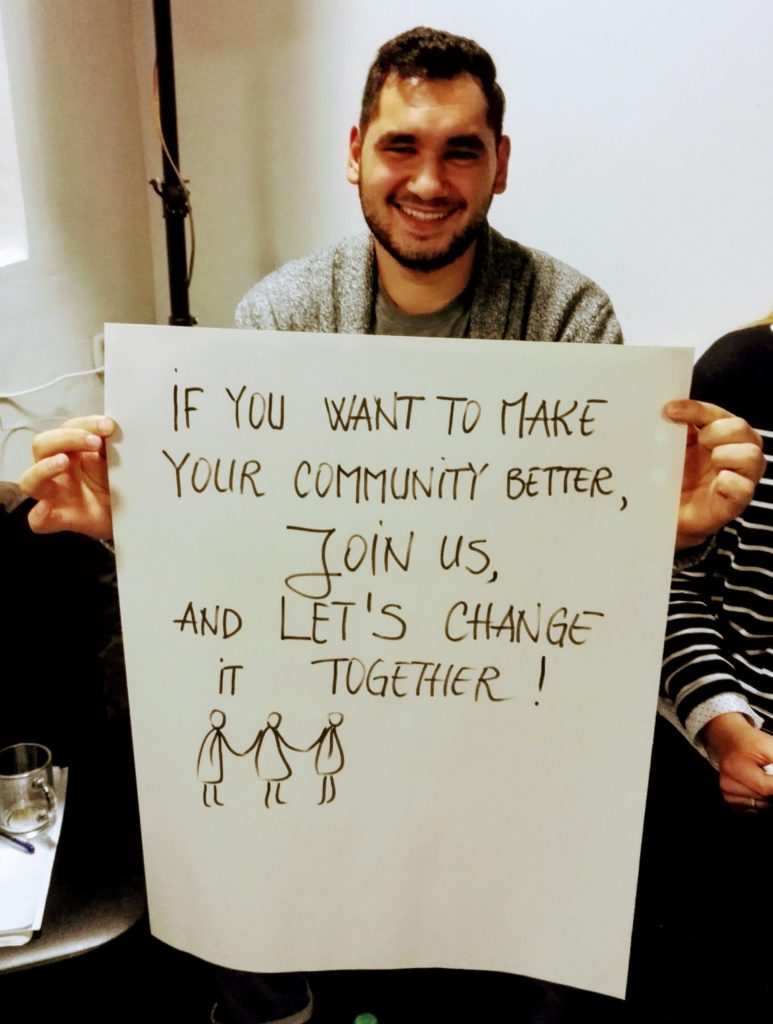 What’s more, there is a danger of this closing happening on the “micro” level as well; as citizens see there is no hope, apathy sets in. As neighbors are told to distrust their neighbors because they are different, they withdraw into themselves and their families. This contraction of a day-to-day public life leaves the playing field open for demagogues to gain power.
What’s more, there is a danger of this closing happening on the “micro” level as well; as citizens see there is no hope, apathy sets in. As neighbors are told to distrust their neighbors because they are different, they withdraw into themselves and their families. This contraction of a day-to-day public life leaves the playing field open for demagogues to gain power.
Organizing as a counterforce
As a practice, a community organizer must push through distrust in a community by doing what skeptics in the community would warn, “we just don’t do here.” The community organizer knocks on the door of community members—even those that they do not know—to bring a piece of civic life directly to a community members’ doorstep.
The community organizer builds local groups across traditional lines of division, whether they be race, or geography, or history. The community organizer develops local leaders to not only get involved in their neighborhoods, but to develop a larger power analysis of the world they live in.
If the community organizer is the activator, then the community members are the leaders, acting with a new sense of self and community. All of this adds up to a very powerful—and very concrete—antidote to the closing of civic space.
Building power from the bottom up
Community organizing starts with a clear analysis of power: who has it and who does not? Organizers build power by doing painstaking outreach into local communities, identifying and training leaders, and waging campaigns to win material gains and shift power relations in society.
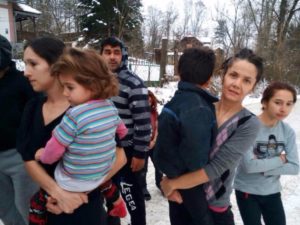
Starting at the margins of society
“Leadership” does not always take the form you think it will take. It is not a politician in a suit standing in front of a crowd. Instead, leadership in a community organizing campaign comes from the margins. It is the group of mothers fighting a discriminatory school policy. It is the the poor neighborhood fighting for basic services in their part of the city.
An organizer must focus on building strong, locally rooted organizations by working on the ground in the communities that are being targeted by right wing populist movements. Rather than using the opposition’s tactics of divide and rule in marginalized communities, the community organizer must root his or her work in the vision and practice of social solidarity.
A New Concept of Civil Society
“Community organizing is not a ‘methodology,’ it is an investment in a new concept of civil society.”
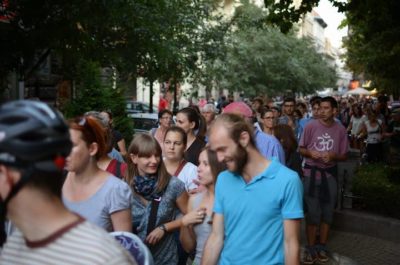 These are the words of an ECON leader from Hungary. Community organizing is still an emerging sector in the constellation of civil society and NGO work in Europe. At the same time the interest in organizing is growing rapidly. However, we do not believe in promoting community organizing as just a “new approach” to community work.
These are the words of an ECON leader from Hungary. Community organizing is still an emerging sector in the constellation of civil society and NGO work in Europe. At the same time the interest in organizing is growing rapidly. However, we do not believe in promoting community organizing as just a “new approach” to community work.
Rather, we believe community should be understood in the context of shifting power from those who have it those who do not. And it should be understood in the context of what it can accomplish: from the mobilization in Banksa Bystrica, Slovakia that united the community in opposition to the neo-nazi governor of the region, to the campaign to fight for decent housing in Ireland which brought together a traditional working class Irish community with migrants moving into the neighborhood.
In short, organizing is not just a form of citizen participation, it is a way that marginalized communities can take control of their own affairs and build the power they need to create structural change in society.
